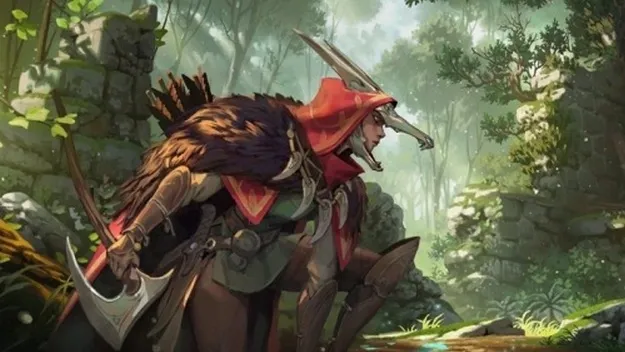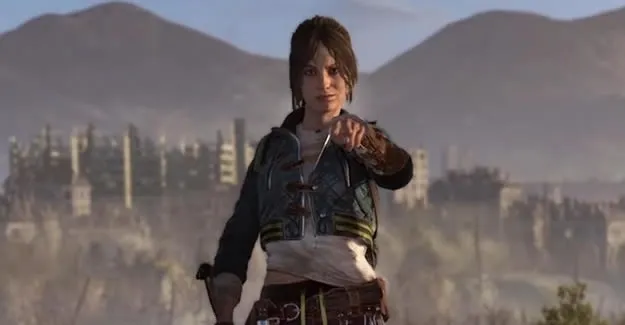Technologies powered by Nvidia Ampera
Quantum leap in graphics
The history of graphics on PCs is long, turbulent, and full of completely unexpected twists. The evolution of the gray office machine into the ultimate platform for playing the most demanding games was marked, above all, by the company Nvidia, whose graphics accelerators have dominated the industry for decades. Each generation of Nvidia graphics cards, from the early Riva TNT accelerators, through the first GeForce models and modern GTX machines, has brought some benefits to the hardware and gaming scene, both in terms of technology and raw power quotients and invested money.
The topic of this review is, above all, technology and the revolution they bring. Programmable Pixel shaders, which premiered in the GeForce 3 series of graphics cards back in 2001, have long been considered the largest single novelty offered by commercial graphics cards to the broad gaming masses, but this crown was taken over this fall by the second generation of RTX cards with a real artillery battery. mature technologies. Key among them is Ray Tracing, premiered in Turing cards that came on the market in 2018.
GeForce RTX 3070, RTX 3080, and RTX 3090 are representatives of the second generation of RTX cards based on the more modern and drastically efficient Ampere architecture, which brings Ray Tracing and raw speed needed to achieve the ultimate goal, 60 frames per second in 4K resolution in the most demanding AAA games of today with active Ray Tracing.
We’re sure there are those among the readers who aren’t sure what Ray Tracing is. Simply put, it is an advanced technology for rendering scenes in a real-time game, which constantly calculates the effect of each light source on objects in the environment, calculating shading, reflections, transparency, and other effects that photons produce on various materials in the environment. Ray Tracing calculates the effect on each visible pixel and requires significantly more processing power and time compared to other shading techniques that require polygons. The final effect is drastically more convincing than scenes rendered by rasterization or other systems - games that support Ray Tracing leave no one indifferent.
What games are involved? After the advent of Turing cards, for a long time we only had three supported titles: Battlefield V, Metro Exodus, and Shadow of the Tomb Raider, but that number, with the gradual proliferation of RTX cards in new gaming machines, began to grow rapidly. Ray Tracing came to Control, MechWarrior 4: Mercenaries, Wolfenstein: Youngblood, Call of Duty: Modern Warfare, Call of Duty: Warzone, and recently brought to almost every AAA game - Dirt 5, Ghostrunner, Fortnite, Minecraft, Godfall, Call of Duty: Black Ops Cold War, Watch Dogs: Legion ... The recent release of World of Warcraft: Shadowlands, the eighth major expansion for WoW, brings another important historical milestone - WoW became the first MMORPG game to support Ray Tracing!
Ray Tracing looks especially good in the most popular multiplayer game on the planet, Fortnite, whose simple aesthetics allow Ray Tracing in 4K and on relatively weaker machines than those needed to play Call of Duty: Black Ops Cold War with all items turned to maximum. In addition to shooting, at Fortnite, you can occasionally enjoy a variety of concert-like events and various other performances, where Ray Tracing comes to the fore through a drastically enhanced light show on stage and podium. If you can't go to normal concerts in the year of COVID, decide on the next best thing, Fortnite festivals.
Ray Tracing is definitely the next big thing in the visual identity of PC games, as evidenced by the games that announce RT support from day one. The first next big thing on the subject is Cyberpunk 2077, which comes on December 10th. In the first half of next year, Far Cry 6, Atomic Heart, Dying Light 2, Vampire: The Masquerade - Bloodlines 2, and many other titles await us, which will make Ray Tracing a significant element of visual identity.
Ray Tracing in an acceptable frame rate would have been difficult to do had it not been for DLSS, another major technology innovation signed by Nvidia. Deep Learning Super Sampling (DLSS) is a software-hardware solution that uses advanced mathematics and AI implemented in dedicated cores on the GPU (so-called "Tensor" core) for rendering game frames in lower resolution and their upscaling in real-time. This saves the processing power of the graphics card, which is capable of processing far more data per unit time. A scene with Ray Tracing turned on, which is rendered in a lower resolution and presented to the player in an "updated" form, will benefit in terms of more frames per second, because the GPU rendered fewer pixels per unit time, ie processed more data in one cycle. This on paper may sound like higher math, but in practice, it happens automatically and without the player's involvement.
Ampere cards feature the second generation of DLSS technology, which performs approximately twice as well as Turing cards. In certain situations, the DLSS scene is more detailed than the one rendered in native resolution! This AI-assisted rendering will in the future provide unprecedented performance growth and gaming at resolutions that are considered science fiction today.
Maybe we shouldn't look so far into the future after all? If you cut the bag a little wider and invest in the RTX 3090 card, you will have the opportunity to enjoy the "DLSS Ultra Performance" mode, which provides comfortable gaming in 8K resolution! In addition to being the first GPU to bring an HDMI 2.1 interface, the GeForce RTX 3090 delivers as much as 24GB of ultra-fast DDR6X RAM that allows you to play at 7680 x 4320 resolution! TVs that can display 33 million pixels are no longer a special rarity.














